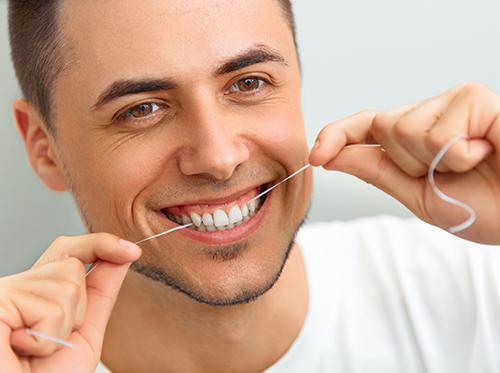 Many smokers believe that chewing tobacco is a safer alternative to smoking cigarettes. This simply isn't the case! In fact, smokeless tobacco can cause serious health concerns.
Smokeless tobacco comes in
Read more
Many smokers believe that chewing tobacco is a safer alternative to smoking cigarettes. This simply isn't the case! In fact, smokeless tobacco can cause serious health concerns.
Smokeless tobacco comes in
Read more
Blog
-
The Hazards of Smokeless Tobacco
posted: Apr. 23, 2024.
 Many smokers believe that chewing tobacco is a safer alternative to smoking cigarettes. This simply isn't the case! In fact, smokeless tobacco can cause serious health concerns.
Smokeless tobacco comes in
Read more
Many smokers believe that chewing tobacco is a safer alternative to smoking cigarettes. This simply isn't the case! In fact, smokeless tobacco can cause serious health concerns.
Smokeless tobacco comes in
Read more
-
Make Every Day Earth Day
posted: Apr. 16, 2024.
 Earth Day began in 1970 as an event to raise awareness of our environment. What began as a single day in April is now recognized around the world to bring
Read more
Earth Day began in 1970 as an event to raise awareness of our environment. What began as a single day in April is now recognized around the world to bring
Read more
-
How do I avoid bad breath?
posted: Apr. 09, 2024.
 At Midland Dental, we see a lot of patients who are concerned about their bad breath, also known as halitosis. So today we thought we would educate our patients about
Read more
At Midland Dental, we see a lot of patients who are concerned about their bad breath, also known as halitosis. So today we thought we would educate our patients about
Read more
-
Do Spring Allergies Mean (B)Looming Dental Problems?
posted: Apr. 02, 2024.
 April showers bring May flowers, and May flowers bring . . . allergies. If you’re one of the millions of people who suffer from seasonal allergies, you might be suffering
Read more
April showers bring May flowers, and May flowers bring . . . allergies. If you’re one of the millions of people who suffer from seasonal allergies, you might be suffering
Read more
-
Broken Tooth: Is It an emergency or not?
posted: Mar. 26, 2024.
 Have you ever had that sinking feeling after biting into something soft and chewy and feeling something hard and crunchy instead? You’ve chipped or broken a tooth, but what should
Read more
Have you ever had that sinking feeling after biting into something soft and chewy and feeling something hard and crunchy instead? You’ve chipped or broken a tooth, but what should
Read more
-
Is Invisalign® Right For You?
posted: Mar. 19, 2024.
 When patients ask the doctor about who benefits from Invisalign clear aligners, the simple answer is this: almost everyone. Unlike conventional braces, they are removable, which makes eating and cleaning
Read more
When patients ask the doctor about who benefits from Invisalign clear aligners, the simple answer is this: almost everyone. Unlike conventional braces, they are removable, which makes eating and cleaning
Read more
-
Go Green for St. Patrick’s Day
posted: Mar. 12, 2024.
 Millions of people, around Southern Pines, North Carolina and beyond, wear green on St. Patrick’s Day so they can show their spirit for the holiday and avoid getting pinched. While
Read more
Millions of people, around Southern Pines, North Carolina and beyond, wear green on St. Patrick’s Day so they can show their spirit for the holiday and avoid getting pinched. While
Read more
-
Good Nutrition Leads to Healthy Mouths
posted: Mar. 05, 2024.
 At Midland Dental, we know the most common oral health diseases are tooth decay and periodontal disease (or gum disease), and both are among the easiest to prevent. One of
Read more
At Midland Dental, we know the most common oral health diseases are tooth decay and periodontal disease (or gum disease), and both are among the easiest to prevent. One of
Read more
-
How many times a day should I floss?
posted: Feb. 27, 2024.
 Flossing is one of the most important parts of your oral care routine. Many patients know they need to do it but find it difficult to fit into their busy
Read more
Flossing is one of the most important parts of your oral care routine. Many patients know they need to do it but find it difficult to fit into their busy
Read more
-
Valentine's Day History
posted: Feb. 13, 2024.
 Valentine’s Day is best known as a celebration of love in all its forms. Pink hearts, red roses, and cute greeting cards adorn every surface you see. What many people
Read more
Valentine’s Day is best known as a celebration of love in all its forms. Pink hearts, red roses, and cute greeting cards adorn every surface you see. What many people
Read more
-
Are there foods that whiten teeth?
posted: Feb. 06, 2024.
 Coffee. Blueberries. Red wine. Tomato sauce. They might please our palate, but they are notorious for staining our teeth. Luckily, nature has balanced the scales for us! Here are just
Read more
Coffee. Blueberries. Red wine. Tomato sauce. They might please our palate, but they are notorious for staining our teeth. Luckily, nature has balanced the scales for us! Here are just
Read more
-
Why Adults Are Choosing Invisalign®
posted: Jan. 30, 2024.
 These days, it’s become more common to see adults at our office getting their teeth straightened with Invisalign clear aligners . . . that is, if you can see them!
Read more
These days, it’s become more common to see adults at our office getting their teeth straightened with Invisalign clear aligners . . . that is, if you can see them!
Read more
-
Can sealants benefit you?
posted: Jan. 23, 2024.
 Molars are difficult to reach when brushing your teeth because they’re full of crevices, caves, and pits that can provide the perfect environment for decay. Sealants are the perfect fix
Read more
Molars are difficult to reach when brushing your teeth because they’re full of crevices, caves, and pits that can provide the perfect environment for decay. Sealants are the perfect fix
Read more
-
Fluorosis: What is it?
posted: Jan. 16, 2024.
 Many people think dental fluorosis is a disease, but it’s not; it’s a condition that affects the appearance of your tooth’s enamel, not the function or health of the teeth.
Read more
Many people think dental fluorosis is a disease, but it’s not; it’s a condition that affects the appearance of your tooth’s enamel, not the function or health of the teeth.
Read more
-
Adults Can Get Cavities, Too
posted: Jan. 09, 2024.
 There are some things we just don’t miss about being a kid. Getting grounded? A thing of the past. Curfew? Not happening. Confiscating our cell phones? As if. Cavities? While
Read more
There are some things we just don’t miss about being a kid. Getting grounded? A thing of the past. Curfew? Not happening. Confiscating our cell phones? As if. Cavities? While
Read more
-
Going Green for the New Year
posted: Jan. 02, 2024.
 Does your list of New Year’s resolutions for the coming months include reducing your ecological footprint? If so, let’s ring in the year with some basic—and some innovative—dental ideas to
Read more
Does your list of New Year’s resolutions for the coming months include reducing your ecological footprint? If so, let’s ring in the year with some basic—and some innovative—dental ideas to
Read more


